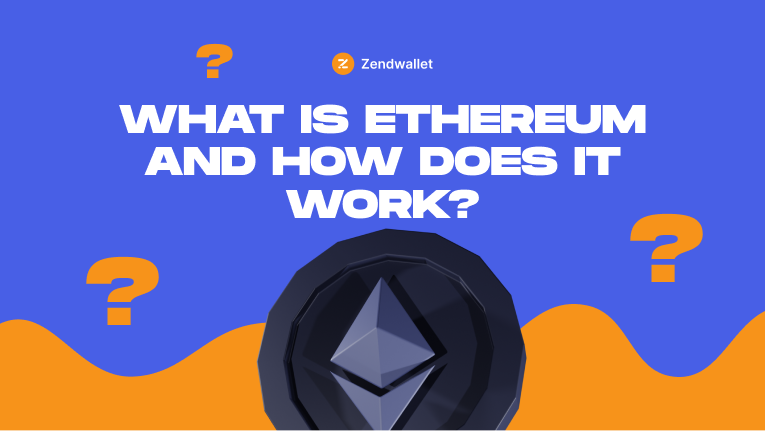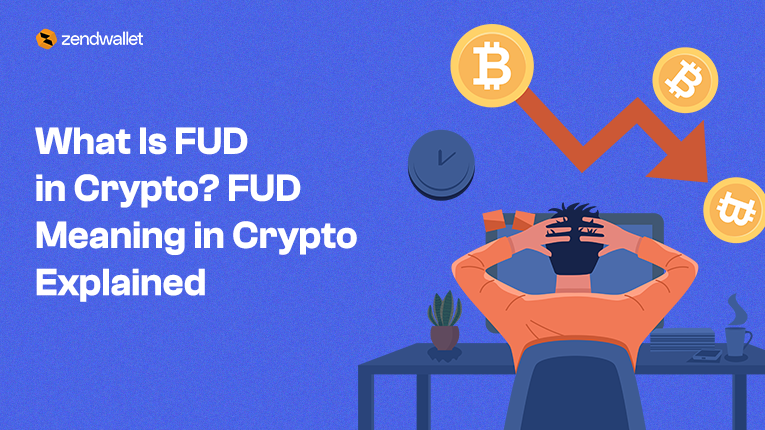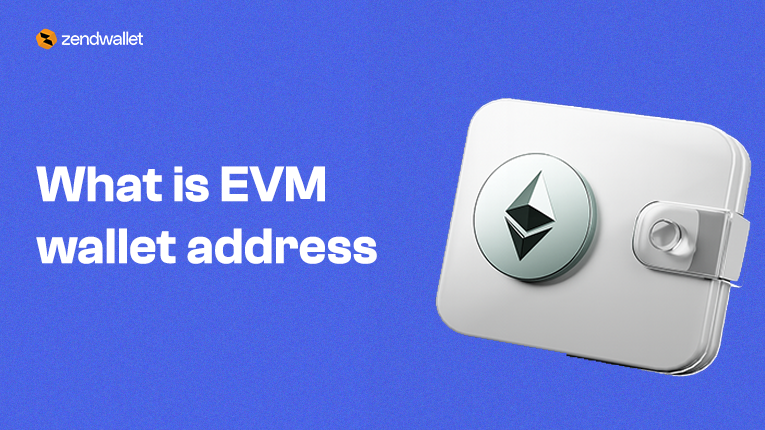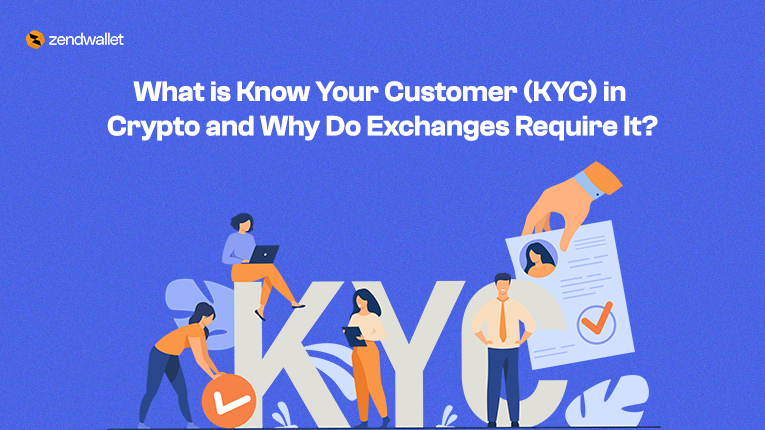What Is Ethereum And How Does It Work? If you’re curious about Ethereum, it’s a blockchain technology famous for its cryptocurrency, Ether (ETH), and its capability to support decentralized applications.
It’s not just a currency; it’s a technology where developers can build and deploy applications that operate autonomously and securely, thanks to its use of blockchain technology.
This technology ensures that all transactions are securely verified through cryptography, enhancing the network’s overall security. Like Bitcoin, primarily a cryptocurrency, Ether, the native Ethereum token, is also used to buy and sell products and services.
Ethereum allows Users to create programs that run on the blockchain, like software running on a computer. These programs can handle complex financial transactions or securely manage and transfer personal data.
In essence, Ethereum extends beyond the financial use of cryptocurrencies, offering a versatile platform for developing applications that could transform how we interact with the digital world.
History of Ethereum
The second most popular cryptocurrency after Bitcoin is called Ethereum (ETH). Approximately 20% of the $1.1 trillion global cryptocurrency market is represented by Ethereum, founded in 2015 by Vitalik Buterin and Gavin Wood.
Ethereum and Bitcoin are very different from one another. In contrast to Bitcoin (BTC), Ethereum aims to be much more than a store of wealth and a medium of exchange. Ethereum, on the other hand, is a blockchain-based decentralized computer network.
The inception of Ethereum traces back to 2014, when Vitalik Buterin authored a groundbreaking white paper introducing the concept. Officially launched in 2015, Ethereum emerged from the collaboration between Buterin and Joe Lubin, the founder of ConsenSys, a prominent blockchain software company.
Ethereum’s founders were visionary in recognizing blockchain’s extensive capabilities, envisioning a platform capable of more than just facilitating secure virtual payments.
A Historic Split of Ethereum
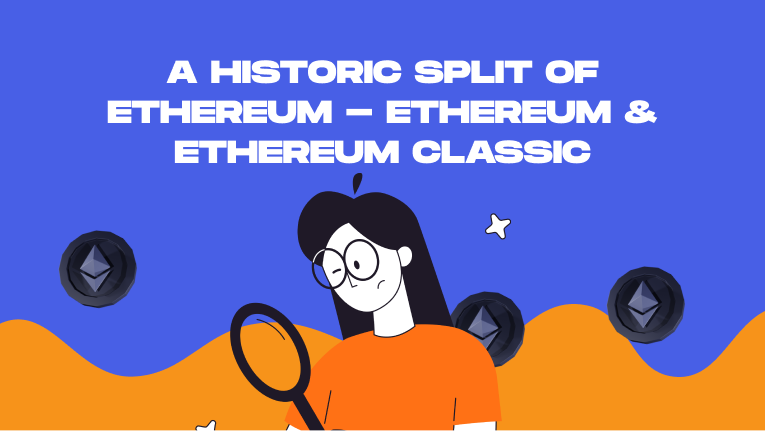
In 2016, Ethereum faced a significant event known as a hard fork, which created two separate entities: Ethereum and Ethereum Classic.
This split was triggered by a security breach within The DAO (Decentralized Autonomous Organizations )project, leading to the theft of the worth of eEther. After the breach, the Ethereum community had to make a critical decision.
The majority opted to alter the blockchain’s history to reverse the theft. A minority, on the other hand, disapproved and opted to preserve the original blockchain’s integrity. As a result, Ethereum Classic (ETC) emerged as a distinct entity.
What is Ethereum, and How Does Ethereum Work?
Ethereum combines the power of blockchain technology with its cryptocurrency, ether (ETH). Therefore, Here’s a breakdown of how Ethereum works:
1. Blockchain Structure: Ethereum’s blockchain is like a chain of digital blocks. Each block contains a list of transactions. Every time a new block is added, it includes a reference to the previous block, linking them together securely. This makes it virtually impossible to alter past transactions.
2. Validators: Instead of everyone trying to verify transactions like in Bitcoin’s system, Ethereum uses a group of users called validators. Validators are responsible for checking the transactions and proposing new blocks to add to the blockchain.
3. Proof of Stake (PoS): Ethereum uses proof of stake to add new blocks to the blockchain. Validators must hold and lock up a certain amount of eEther as a security deposit. The more eEther they stake, the more likely they will be chosen to propose a new block and earn rewards.
– Casper and Gasper: These specific algorithms help Ethereum’s network decide who can validate a block (Casper) and combine multiple methods to ensure the network operates smoothly (Gasper).
4. Rewards and Penalties: Validators earn new ether tokens as a reward for successfully validating blocks. However, if they act dishonestly or make mistakes, they can lose some or all of their staked eEther
5. Ethereum Wallets: You need a digital wallet like Zendwallet to use eEther Wallets don’t store your eEtherbut hold your private keys.
These keys are like secure digital passwords that let you access and manage your eEther. You can think of a wallet as your interface to the Ethereum network, where you can send and receive eEther.
Private Keys: Each ether unit doesn’t have its private key. Instead, your entire ether balance is secured with a single key managed by your wallet, ensuring that you’re the only one who can access or spend your eEther
Ether and Ethereum: What’s the Difference?
Ether, as Ethereum’s native cryptocurrency, serves dual roles as a digital currency and an investment asset within the Ethereum blockchain network.
However, Ethereum extends beyond mere financial transactions, offering various functionalities. Boaz Avital, head of product at Anchorage, highlights Ethereum’s versatility, illustrating its capacity to facilitate diverse transactions, from basic fund transfers to intricate operations like asset exchanges and digital art purchases.
Moreover, Ethereum is a platform for decentralized applications (DApps) and data storage, granting users greater control over their data compared to centralized alternatives. Smart contracts, a cornerstone of Ethereum, automate contract execution without intermediaries, streamlining processes and boosting efficiency.
In essence, Ethereum constitutes a comprehensive ecosystem where users can participate in financial activities, securely store data, and leverage innovative smart contracts without relying on traditional centralized authorities.
Ethereum vs Bitcoin:
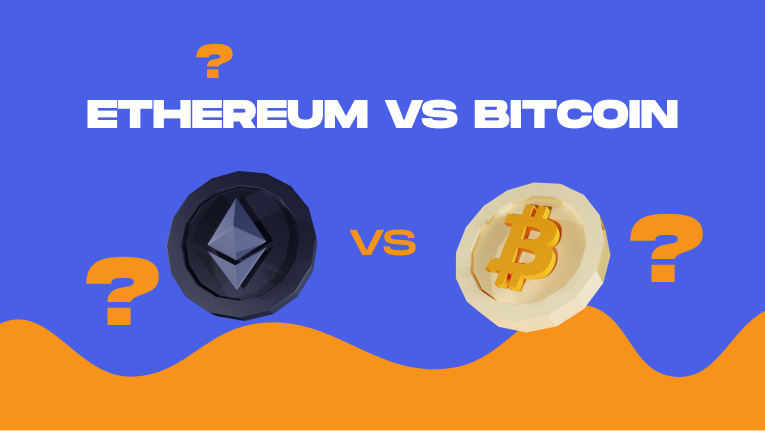
Ethereum and Bitcoin are often compared but serve different purposes in cryptocurrencies.
Ethereum is known as “the world’s programmable blockchain,” allowing developers to create decentralized applications on its platform. In contrast, Bitcoin’s blockchain was designed primarily to facilitate Bitcoin transactions.
While Bitcoin has a capped supply of 21 million coins, Ethereum’s supply is theoretically unlimited, but its issuance is constrained by the time it takes to process blocks. Currently, there are over 120 million EEtherin circulation.
One significant difference lies in transaction processing fees. Ethereum transactions involve gas fees paid by participants, which are then burned by the network. Bitcoin transaction fees, on the other hand, are paid to miners.
Lastly, Ethereum has transitioned to a proof-of-stake consensus mechanism, while Bitcoin continues to rely on the energy-intensive proof-of-work system, where miners compete for rewards.
The Future of Ethereum
Ethereum made a significant change when it moved to the proof-of-stake protocol. This upgrade added two layers to the platform: one for handling transactions and validations and another for ensuring everyone agrees.
The goal was to improve Ethereum’s handling of many transactions and fix problems with slow speeds and high fees. Now, let’s see what’s next for Ethereum.
1. Scalability Solutions: Ethereum aims to boost its speed and efficiency, paving the way for smoother transactions and lower costs.
2. Development Roadmap: With a clear plan, Ethereum aims to make transactions cheaper, enhance security, improve user experiences, and stay ahead of potential challenges.
3. Web3 Integration: Ethereum is set to become a cornerstone of Web3, powering a new era of decentralized apps and services that empower users and foster innovation.
4. Gaming and Virtual Reality: Ethereum’s integration into gaming and virtual reality realms promises to revolutionize digital ownership and trading, unlocking fresh gaming experiences and economic opportunities.
5. Non-Fungible Tokens (NFTs): Ethereum’s role in creating and trading NFTs reshapes digital art and collectables, ensuring clear ownership and transparent transactions.
6. Decentralized Autonomous Organizations (DAOs): Ethereum’s smart contracts enable the creation of decentralized organizations run by their members, ushering in a new era of transparent and automated governance.
In summary, Ethereum’s future is characterized by scalability improvements, integration into emerging technologies like Web3 and gaming, the proliferation of NFTs, and the development of decentralized governance models through DAOs. These advancements position Ethereum as a critical player in shaping the future of decentralized applications and digital economies.
What are the Benefits of Ethereum
1. Established Network: Ethereum boasts a robust and time-tested network, facilitating countless transactions over the years. With a vibrant global community and the most extensive ecosystem in the blockchain realm, Ethereum stands as a pillar of reliability and stability.
2. Versatility: Ethereum transcends its role as a mere digital currency, offering various functionalities. It serves as a conduit for multiple financial transactions, executes smart contracts autonomously, and provides a secure data storage platform for third-party applications. This versatility makes Ethereum a go-to solution for various needs across industries.
3. innovation Hub: Ethereum’s large community of developers always seeks new ways to improve the network and create innovative applications. Its popularity makes it the preferred platform for developing exciting decentralized applications. However, some projects may carry risks due to their decentralized nature. Overall, Ethereum remains a hub of constant innovation, pushing the boundaries of decentralized technology.
4. Decentralization: Ethereum’s decentralized architecture removes the reliance on intermediaries, empowering users to transact directly on the network. By bypassing traditional gatekeepers like banks or centralized servers, Ethereum offers users greater autonomy and efficiency in managing their digital assets and executing transactions.
Frequently Asked Questions
What is Ethereum 2.0?
Ethereum 2.0, introduced in 2022, represents a monumental shift in Ethereum’s infrastructure. It replaces the energy-intensive proof-of-work mechanism with a more eco-friendly proof-of-stake consensus algorithm.
This transition to staking, where users lock up cryptocurrency to validate transactions, not only enhances network security but also drastically reduces Ethereum’s carbon footprint by up to 99.9%, paving the way for a more sustainable and efficient blockchain ecosystem.
What Will Ethereum Be Worth in 2030?
Predicting the exact value of Ethereum in 2030 is challenging due to various factors influencing cryptocurrency prices. Speculation aside, the cryptocurrency market is highly volatile, making long-term predictions uncertain.
Why Did Ethereum Drop?
Ethereum’s price fluctuates due to many factors, including market sentiment, regulatory changes, news events, and speculative activity. These variables can cause sudden drops or increases in Ethereum’s value over short periods.
How Much Is One Ethereum Coin Worth?
As of April 21, 2024, the price of one Ethereum coin was approximately $3,156. However, cryptocurrency prices are highly volatile and can change rapidly.
How to Buy Ethereum with Zendwallet
Choose Zendwallet: Zendwallet is a secure and user-friendly option for buying and storing Ethereum. It offers robust security features to safeguard your assets.
Deposit Fiat Currency: Link your bank account or debit card to Zendwallet to deposit fiat currency, such as dollars. This will allow you to fund your account to purchase Ethereum.
Purchase Ethereum (ETH): Navigate to the Ethereum purchase section within Zendwallet once your account is funded. Here, you can buy Ethereum at the current market price. Be mindful of trading fees associated with the transaction.
Secure Storage: After purchasing Ethereum, it’s crucial to store it securely. Zendwallet provides a safe and encrypted digital wallet for storing your Ethereum. For added security, consider transferring your Ethereum to a cold wallet disconnected from the internet.
Should You Buy Ether?
You should consider Investing in Ethereum, which can offer several potential benefits:
1. Value and Utility: Ethereum’s native cryptocurrency, Ether (ETH), has intrinsic value and various use cases within the Ethereum network.
2. Network Potential: Ethereum’s migration to new protocols and the growing adoption of Ethereum-based decentralized applications (dApps) could increase demand for ETH.
3. Investment Opportunities: You can explore investing in companies building applications on the Ethereum network or opt for professional investment funds like the Bitwise Ethereum Fund through Zendwallet.
4. Before investing in Ethereum, it’s essential to consider the risks and consult with a financial advisor. Cryptocurrency markets are highly volatile, and you should only invest money you can afford to lose.
Using Zendwallet to purchase and store Ethereum, you benefit from a secure and convenient platform to meet your cryptocurrency needs.
Key Takeaways
– Ethereum is more than just money; it’s a platform where developers can build applications.
– Its blockchain is highly secure due to the immutable and chronological chain of blocks.
– The proof of stake system helps reduce energy use and makes Ethereum more scalable.
– Wallets and private keys are essential for safely managing and securing your ether.
The Bottom Line
Ethereum is more than just a cryptocurrency; Ethereum is a decentralized blockchain platform that enables developers to create and deploy applications and smart contracts. Its native cryptocurrency, Ether (ETH), facilitates transactions and incentivizes network participants through proof-of-stake (PoS) validation.
While the future role of cryptocurrency remains uncertain, Ethereum is poised to play a significant role in both personal and corporate finance, as well as various aspects of modern life.
You can also watch https://youtu.be/jYLXorNpLlE?si=nqCNielkj2_PeGa1
